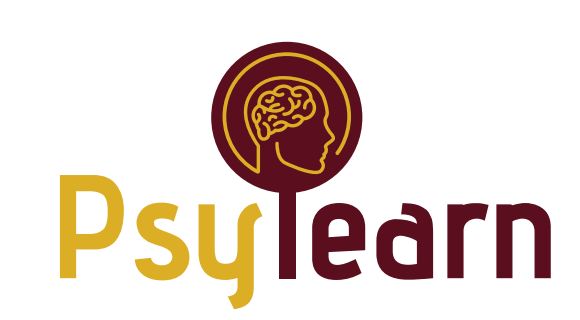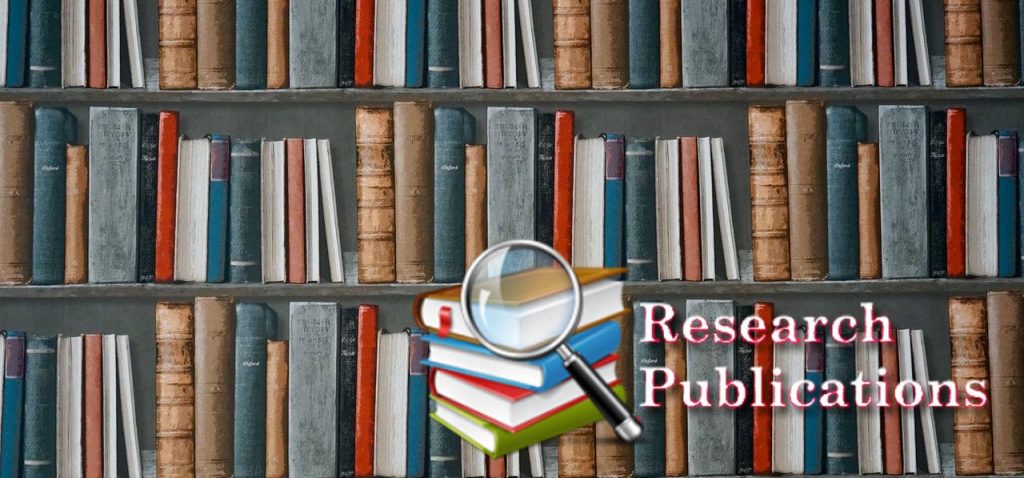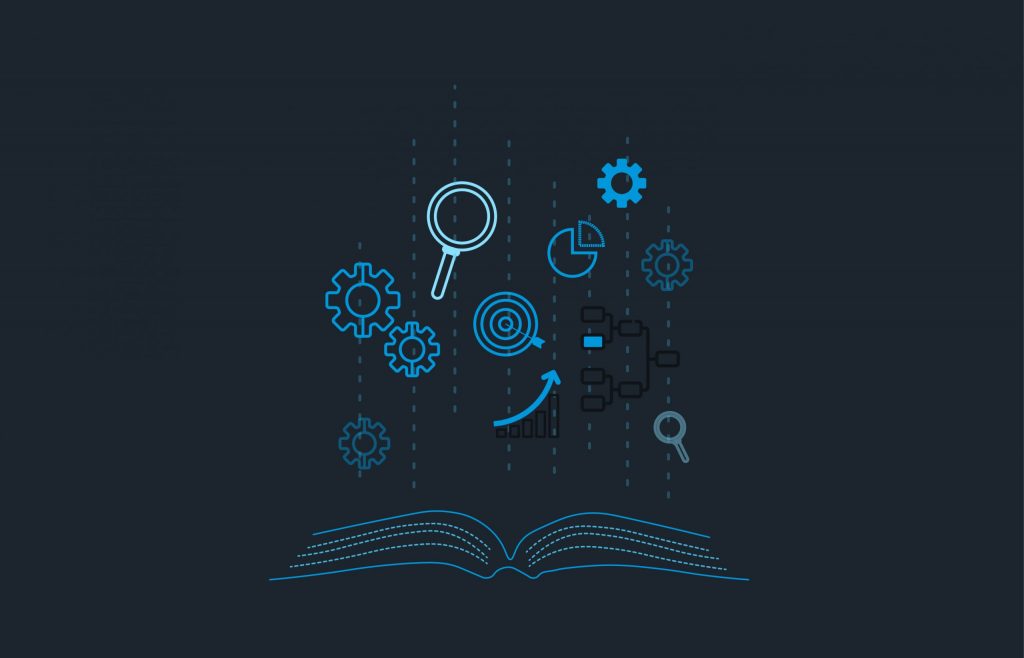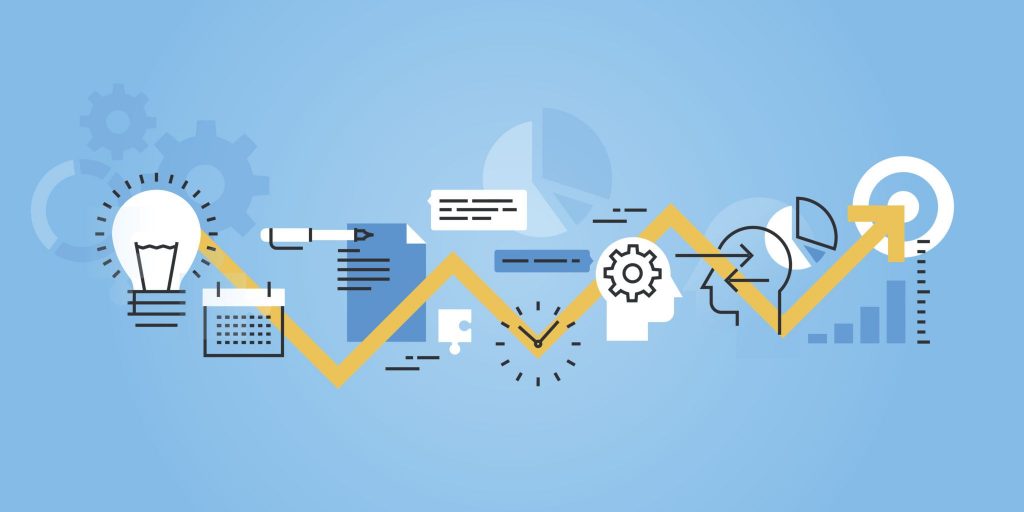Welcome To Psylearnsupport
- info@psylearnsupport.com

- +91 9823433633 / +91 96079 11506

Research publications
Early 21st century marked the emergence and growth of social networking media in the whole world. Since then these media have become a major part of people’s lives, specially the lives of the youth. Many are using social media, especially Facebook, Twitter and WhatsApp to build relationships, connect with the world, share and gain knowledge and information, build stronger personalities and have better social lives (Boyd, 2009).Social networking sites enable people to communicate with one another. Here, users can create their own profile and share personal information about themselves, including status updates, photographs, videos and instantly messaging friends and family. This self-presentation allows users to create their own profile that reflects their ‘ideal self’ (Ellison, Steinfield& Lampe, 2007).
Recent studies show that there is 2.46 billion social network users world in 2017 and it is estimated that there will be around 2.77 billion users in 2019. In 2017, 71 percent of internet users were Social Network Users and these figures are expected to grow. The increased world-wide usage of smart phones and mobile devices has opened up the possibilities of mobile social network with increased features. With over 1.86 billion monthly active users, social network facebook is currently the market leader in terms of each and scope. Social network not only enable users to communicate beyond local or social boundaries, but also offer possibilities to share User-Generated Content (UGC). (www.statista.com).
According to study in 2017, 63% of the users of Facebook or Twitter considers these networks to be their main source of news, with entertainment news being most seen. In times of breaking news, Twitter users are more likely to stay invested in the story. In some cases when the news story is more political, users may be more likely to voice their opinion on a linked Facebook story with a comment or like, while Twitter users will just follow the sites feed and or retweet the article. (Barthel,Michael; et al.) A fascinating study by New York Times Consumer Insight Group revealed the motivation that participants cited for sharing information on social media. These includes the desire to reveal valuable and entertaining content to others; to define themselves; to grow and nourish relationships and to get the word out about brands and causes they like or support. (Gaitho, Maryanne. 2017).
According to recent article from Computer in Human Behaviour, Facebook has also been shown to lead to issue of social comparison. Users are able to select which photos and status updates to post, allowing them to portray their lives in acclamatory manner (Cramer, et al. 2016). These updates can lead to other users feeling like their lives are inferior by comparison (Shakya; Christakis. 2017).
Social media has been linked together to higher levels of loneliness, envy, anxiety, depression, narcissism, and decreased social skills. It seems that social media is creating a paradox effect: giving off the illusion of many choices while making it harder to find viable option. The paradox effect is creating more social engagement, social capital, and popularity, but masking one’s true persona. Online identity or internet persona is a social identity that an internet user establishes in online communities and websites. It can also be considered as an actively constructed presentation of oneself. The ‘Online Dis-inhibition Effect’ is a notable example referring to a concept of unwise and uninhibited behaviour on the internet, arising as a result of anonymity and audience gratification (Suler, 2004).
Due to the popularity of social networking sites such as Facebook and Twitter, especially Facebook, the current study will look at the relationship of social anxiety, self-esteem and narcissism with Facebook and other social media users.
1.1.Aim of the study
The aim of this work is to conduct a“A Psychological study on the relationship between Self-esteem, Narcissism and social anxiety of social media users”.
1.2.Definition of concepts
1.2.1.Social media
Social media is the collective of online communications channels dedicated to community-based input, interaction, content-sharing, and collaborations. Websites and applications dedicated to forum, microblogging, social networking, social bookmarking, social curation and wikis are among the different types of social media. (www.techtarget.com).
1.2.2.Self-esteem
Self-esteem refers to an individual’s sense of his or her value or worth, or the extent to which a person values, approves of, appreciates, prizes, or likes him or herself (Blascovich&Tomaka, 1991).
1.2.3.Narcissism
The word ‘narcissism’ comes from a Greek fable about a handsome young man, named Narcissus, who fell in love with his own reflection in a pool of water. Narcissism is defined as long standing preoccupation with one’s self, creating an overwhelming need for admiration. (www.rawhide.org).Narcissism is an excessive admiration and unrealistic positive view of oneself and physical appearance. A narcissist has a lack of regard for others and solely concentrates on what benefits them, (Campbell & Foster, 2007).
1.2.4.Social Anxiety
Social anxiety is the fear of being judged and evaluated by other people, leading to feelings of inadequacy, inferiority, self-consciousness, embarrassment, humiliation, and depression. (www.Socialanxietyinstitute.org)
Newsletter
Subscribe to our newsletter to stay updated.
Most Popular

Research publications

REVIEW OF LITERATURE
The literature portray on “A Psychological study on the relationship between Self-esteem, Narcissism, and Social anxiety of Facebook and other Social media Users” is reviewed under following headings:
2.1. Social media use in Self-esteem
2.2. Social media use in Narcissism
2.3. Social media use in Social Anxiety
According to Erber and Erber (2011), Social relationships are considered to be the most important part of a human’s life, due to the modern age we live in where Internet and social networking sites are part of our everyday life and it is an easy access, researchers believed that social networking sites would negatively impact people’s relationships and feared that virtual communication would replace face-to-face interactions and deteriorate social bonds (Pettijohn, LaPiene&Horting, 2012). Wang & Liang (2011) looked at the effects of social media on college students, their research suggests social networking is affecting the students’ efficiencies as well as their grades because their research indicated that college students prefer to use social media and spend many hours checking social networking sites. Social networking sites such as Facebook are designed to share information about you to others including likes, hobbies and status updates; this information could make people aware of their own limitations and shortcomings which could lower their self-esteem or this information represents selective and have a positive biased opinion of the self which might raise self-esteem (Gonzales & Hancock, 2011). Gonzales & Hancock (2011) found evidence that exposure to information presented on one’s Facebook profile increases self-esteem especially when a person edits the information about themselves.
Ellison et al. (2007) found evidence that self-esteem may play a role as a moderator of the relationship between social networking sites and social capital, social capital is a network of relationships among people. They suggested that people who have low self-esteem appear to benefit more from Facebook use from those with high self-esteem. Steinfield et al. (2008) looked at social capital, self-esteem and use of online social networking sites where they interviewed 18 people regarding Facebook use and Internet use, and they also measured their self-esteem and satisfaction with life. They found that self-esteem and satisfaction with life were strongly associated with social capital outcomes. Self-esteem plays a role in the relationship between the amount of Facebook use and bridging social capital, according to Steinfield et al. (2008) people with lower self-esteem gained more from their use of Facebook in terms of bridging social capital than those with higher self-esteem.
Pettijohn, LaPiene and Horting (2012) looked at the relationship between active Facebook use, self-esteem based on the quality of friendships and personality on 200 undergraduate students from public universities in Ohio and South Carolina. The result showed that there was a significant positive relationship between Facebook use and friendship contingent self-esteem but there were no significant relationships between Facebook use and personality (Pettijohn, LaPiene&Horting, 2012). According to Mehdizadeh (2010) people with low self-esteem are more likely to engage in online activities that may raise their self-esteem. Mehdizadeh (2010) looked at self-esteem on social networking site and their associations with online self-promotional content, the evidence found that people with lower self-esteem were related to greater online activity as well as some self-promotional content. This is relevant to the current study because one of the goal of this study is to see if there is a relationship between self-esteem with Facebook use and other online activities.
2.2. Social media Use in Narcissism
While self-esteem may play a role on Facebook and internet use, narcissism is also looked up on how it may play a role on Facebook and internet use. Narcissism is a pervasive pattern of grandiosity, an overwhelming need for admiration and usually a complete lack of empathy toward others (Psych Central, 2014). Narcissism is associated with positive self-views of agentic traits, including intelligence, physical attractiveness and power (Mehdizadeh, 2010).
According to Riggio (2014) people who are in their 20s are three times more likely to experience a narcissistic personality disorder than those who are in their 60s because young people are more focused on achieving success, making money and personal fame. According to Buffardi and Campbell (2008) narcissism is related to a higher number of social relationships, self-promoting self-presentation, and the perception of having a large number of agentic characteristics. Alloway et al. (2014) also found that the relationship between narcissism and empathy was not significant for males, and for females only narcissism was related to personal distress.
Mehdizadeh (2010) looked at how narcissism and self-esteem shows on social networking sites such as Facebook, 100 university students were recruited and they have to respond to the Rosenberg Self-Esteem and the NPI-16 subclinical narcissism. The participants were added to Facebook to have their pages coded, the participants’ page was coded for the extent to which they are self-promoting. The “About Me” section, profile picture, first 20 pictures on the “View Photos of Me” section, the “Notes” section, and their status updates. Mehdizadeh (2010) found evidence that there is a positive correlation between individuals who scored higher on the NPI-16 subclinical narcissism scale, the number of times Facebook was checked per day and the time spent on Facebook. Mendelson and Papacharissi (2010) looked at narcissism in college students by using series of their pictures, by analysing the college students’ photos but their findings suggests that the series of photos that were taken does not represent narcissism instead the photos represent a strategic representation of a social group and social life in college.
Buffardi and Campbell (2008) looked how narcissism manifested on a social networking site, the result of their study showed that narcissism was not found to be related of a person’s self-description on their web page. However, according to Buffardi and Campbell (2008) narcissism is positively related to self-promoting information about the self. Sedikides et al. (2004) looked at how self-esteem can be accounted for the relation between narcissism and psychological health. The participants were measured their self-esteem, narcissism, depression, loneliness and satisfaction with life. The experimenters were using Rosenberg’s self-esteem questionnaire, the narcissistic personality inventory questionnaire, the Centre for Epidemiological Studies Depression Scale and the loneliness scale. They also use emotional and social loneliness scale, satisfaction with life scale and affect balance scale. Their evidence showed that self-esteem mediates the relation between normal narcissism and psychological health, according to Sedikides et al. (2004) the self-esteem component of narcissism is responsible for its positive relations with the outcome of psychological health. This is relevant to the current study because one of the goal of this study is to see if there is a relationship between Narcissism with Facebook use and other online activities.
2.3. Social mediause in Social Anxiety
Self-esteem and narcissism may play a role on Facebook and internet use, social anxiety is also looked up on how it may play a role on Facebook and internet use. Viswanath et al. (2009) looked at how pairs of users in a social network interact, and they examine how different patterns affect the overall structure of the activity network. They found that only 30% of paired users interact consistently on Facebook from one month to the next.
McCord, Rodebaugh& Levinson (2014) looked at the relationships between social anxiety, anxiety on Facebook and Facebook use, they hypothesise that people with high social anxiety would be less frequent in using Facebook than people with low social anxiety and they also predicted that people with high social anxiety would report higher anxiety on Facebook than those with low social anxiety. The findings suggest that social anxiety was positively correlated with anxiety experienced during Facebook use, but they found no correlation between people with high social anxiety would predict higher anxiety on Facebook. McCord, Rodebaugh& Levinson (2014) pointed out that people with high social anxiety use Facebook more frequently than those with low social anxiety.
Fernandez, Levinson and Rodebaugh (2012) looked at social anxiety and internet use, they suggested that people with high social anxiety may try and hide their anxiety through online interactions. They conducted a study were they measured the participants’ anxiety using the Social Interaction Anxiety Scale. The participants have to complete the questionnaires and log into their Facebook account and save their Facebook profile in the computer. The coders rate the participants’ social anxiety level whether these ratings correlated with the participants’ own self-reported social anxiety level. The findings suggested that social anxiety was not significantly correlated to the amount of time using Facebook. They also found out that people with higher social anxiety had fewer Facebook friends. Internet and social networking sites can also be beneficial to individuals who have social anxiety disorder, social networking sites can help people with social anxiety to interact more with other people online (Levinson &Rodebaugh, 2012).
According to Back et al. (2010) people do not use their online social networking profile to promote an idealized virtual identity, instead they use social networking sites for expressing and communicating real personality. Facebook and other social networking site can provide an opportunity to make connections with people with similar interests and goals. Tyler (2002) agreed that with the invention of the Internet, people have easy access to other people and they feel better connected and more strongly connected by others which leads to happiness, engagement in families, organizations, communities and society. Tyler (2002) also pointed out that electronic communication may lead to weaker social ties because people have few reasons to leave their homes and actually interact face to face with other people. This is relevant to the current study because one of the goal of this study is to see if there is a relationship between social anxiety with Facebook use and other online activities.
Most Popular

REVIEW OF LITERATURE

SIGNIFICANCE OF THE STUDY
The goal of the current study is to examine self-esteem, narcissism and social anxiety and how they correlate to the amount of time spent on Social medias and other online activities. Previous research has not examined the relationship between self-esteem, narcissism and social anxiety with the overall internet use. Social networking sites are extremely popular and are still growing popularity. There are number of popular social networking sites on the Internet but in this current study Facebook is chosen, as Facebook is one of the most popular social networking sites and it is most commonly used.
In the current study the link between self-esteem and use of Facebook and the Internet will be examined, also the link between social anxiety and the use of Facebook and the Internet will also be examined, and in addition, the link between narcissism and the use of Facebook and the Internet will also be examined. The amount of time that is spent on Facebook and other online activities are the predictors of self-esteem, social anxiety and narcissism. On the basis of demographic data the difference between male and female social media usage and a categorisation based on the age group and whether employed or unemployed and their relation with criterion variables will also be inferred.
Social networking sites (SNS)is an online platform that people use to build social relations with other people who share similar personal or career interests, activities, backgrounds or real life connections. User-Generated-content (UGC) is the lifeblood of SNS organisations. SNS allows users to share ideas, digital photos and videos, pots and to inform others about online or real- world activities and events with people in their network. (en.m.wikipedia.org). According to communication theory, of Users and Gratifications, an increasing number of individuals are looking to the internet and social media to fulfill cognitive, affective personal integration, social integration and tension free needs. With internet technology as a supplement to fulfill needs, it is in turn affecting everyday life, including relationship, religious, academic, entertainment and family.
Core self-evaluations like self-esteem also appear to play a role in addictive social media use. Such core-self evaluations mayinvolve core beliefs, attributions, schemata, and automatic thoughts –and that have the power to activate behaviorin general, including social media activity. Hence, if an individual thinks “I amnotlikable” or “I have poor social skills” – while at the same time believingthat having a large number of friends or followerswill change such self-evaluations– this may facilitate addictive social media participation.
Narcissism was positively related to addictive use of social media, and appeared to have a small-to-medium sized effect after controlling for basic socio-demographics – thus being meaningfully related to the construct. Facebook, Instagram, WhatsApp and other social media applications may serve as ideal social arenas for individuals who appreciate and are attracted to engaging in ego-enhancing activities, as they enable individuals to bolster their egos on the basis of instant feedback from potentially large numbers of other individuals. It could therefore be speculated that individuals with elevated narcissistic traits use social media excessively because these online platforms may fulfill a need for affiliation and confirms the sense of an idealized self.
Signs of Narcissist
- Extreme self –centeredness and a grandiose view of oneself.
- Extreme need for admiration and attention.
- Unreasonable expectation of favouritism.
- Arrogant behaviour or attitudes.
- Fantasies revolving around personal success and attractiveness.
The behaviour of cyber narcissist
- Constantly updating profile picture to gain admiration and attention.
- Oversharing of pictures that are purely self-promotional and are of little value to their friends, just to satisfy their desire for more likes.
- Obsessively checking social media accounts upward of 60-100x times a day to make sure they do not miss any comments or mentions about them.
- Over friending people they do not speak to or know well. They are not interested in making real friends, they do it for attention and numbers.
- Update people on every little thing to self-promote. Most of the time spent on self-boosting and bragging.
- Seek support when they are having a bad day. They often scroll through social media feeds to remind themselves what an awesome life they have.
- Easy to anger. A social media narcissist may display significant anger from comments or general disagreement on certain points.
To some extent these are common activities done by majority of social media users. So it is indeed the need of the hour to conduct a study on the level of narcissistic personality traits of the social media users.
Many of the studies conducted earlier has shown that, addictive social media use should be manifested by being preoccupied by social mediausing, in order to reduce negative feelings (mood modification),gradually using social media more and more in order to get the same pleasure from it (tolerance/craving), suffering distress if prohibited from using social media (withdrawal), sacrificing other obligations and/or causing harm to other important life areas because of the social media use (conflict/functional impairment), and desiring or attempting to control the use of social media without success (relapse/loss of control). Consequently, as problematic social media use may represent a specific form of ‘Internet addiction’.
From the analysis of level of self-esteem, narcissism and social anxiety of the social media users, the degree of intensity of influence of social media on behavioural change of the society, since the majority being social media users, can be understood. The inference will so far further pave the way for controlling the problematic attitudes and approaches of the society as a whole.
Most Popular

SIGNIFICANCE OF THE STUDY

METHODOLOGY
Methodology include Statement of Research problem, Objectives, Hypothesises, Selection of Sample, Research design, Test/Tool for data collection and Statistical analysis technique.
4.1. Research problem
The Research problem can be stated as “A Psychological study on the relationship between Self-esteem, Narcissism and social anxiety of social media users”.
4.2. Objectives of the Study
The objectives includedin the study are listed as follows:
- To find out the relationship between intensity of social media usage with level of self-esteem.
- To find out the relationship between intensity of social media usage with level of Narcissism.
- To find out the relationship between intensity of social media usage with level of Social Anxiety.
- To find out the level difference between the intensity of social media usage of males and females of the population.
- To find out the difference between the level of Self-esteem, Narcissism and Social Anxiety between males and females of the population.
- To find out the difference between the level of intensity of social media usage between employed and unemployed or students.
- To find out the significant difference between the level of self-esteem, Narcissism and social anxiety between Employed and Unemployed or Students.
3.3. Hypothesises
Various hypothesises formulated for the study are as follows:
- It is hypothesised that there will be significant relationship between intensity of social media usage with level of self-esteem.
- It is hypothesised that there will be significant relationship between intensity of social media usage with level of Narcissism.
- It is hypothesised that there will be significant relationship between intensity of social media usage with level of Social Anxiety.
- It is hypothesised that there will be significant difference between the intensity of social media usage of male and female.
- It is hypothesised that there will be significant difference between the level of Self-esteem, Narcissism and Social Anxiety between male and female.
- It is hypothesised that there will be significant difference between the intensity of social media usage between employed and unemployed or students.
- It is hypothesised that there will be significant difference between the level of self-esteem, Narcissism and social anxiety between Employed and Unemployed or Students.
3.3. Selection of Sample
The types of sampling being used to employ participants are Purposive Random Sampling and Snowball sampling. It is estimated to conduct study on 60 samples including both male and female and employed and unemployed or students who are using Social media.
3.4. Research Design
The current study is a non-experimental quantitative correlational design. The predictor variables are the amount of time people use Facebook on their computers or smartphones, and the amount of time people do other activities online, and the criterion variables are self-esteem, narcissism and social anxiety. Demographic variables, such as age, gender,employed or Unemployed/student etc. will also be examined using independent t-tests.
3.5. Test/Tool for data collection
- ICT scale
ICT items and scale (Corcoran, 2013; see appendix 2) measures the hours spent online on weekdays and weekends. The ICT scale has nineteen questions designed to measure individuals’ amount of time spent online on weekdays and weekends. Example questions are “Do you own a Smartphone,” “Post information about yourself or others on websites (e.g., Facebook, blogs, forums, etc.)” and “Surf the net.” The participants have to indicate “yes” or “no” in questions 1, 3 and 4, in question 2 they have to indicate how often they use their phone in college hours on a five point Likert scale with “never” to “always.” Questions five to 19 the participants have to indicate whether they done the following activities during the last three months by answering on a five point Likert scale with “never,” “once or twice,” “about once a month,” “about once a week” and “(almost) daily.” The ICT scale has high reliability with a Cronbach’s alpha of .82 (Corcoran, 2013).
- The Facebook Intensity Scale
The Facebook Intensity Scale (Ellison, Steinfield& Lampe, 2007; see appendix 3) measures Facebook usage including, how often they use Facebook, how emotionally connected the individuals are to Facebook, and how well Facebook was integrated into individuals’ daily activities. Facebook Intensity Scale included the amount of Facebook friends the individuals’ have and the amount of time spent on Facebook per day. Facebook Intensity Scale has eight questions designed to measure individuals’ daily activities and emotional connection with Facebook. Example questions are “Facebook is part of my everyday activity,” “Facebook has become part of my daily routine” and “I would be sorry if Facebook shut down.” The participants answered the first six questions on a five point Likert scale with “ strongly disagree,” “ disagree,” “ agree nor disagree,” “ agree” and “ strongly agree,” questions seven and eight was a closed-ended questions for example on question seven the amount of Facebook friends “10 or less, 11–100, 101–251, 300–400, more than 400.” The scale has high reliability with Cronbach’s alpha of.83 (Pettijohn, LaPiene&Horting, 2012).
- The Rosenberg Self-Esteem Scale
The Rosenberg Self-Esteem Scale (Rosenberg, 1965; see appendix 4) is a widely used self-esteem measure. The Rosenberg self-esteem Scale measures people’s self-esteem by asking the respondents about their current feelings. Rosenberg Self-Esteem Scale has ten questions designed to measure individuals’ current feelings about themselves. Example questions are “On the whole, I am satisfied with myself,” “I feel I do not have much to be proud of” and “I take a positive attitude toward myself.” The participants have to indicate how strongly they agree or disagree with each statements. They must rate all ten questions and it is a four point Likert scale with “strongly agree,” “agree,” “disagree” and “strongly disagree.” The Self-Esteem Scale has high reliability with Cronbach’s alpha of .88 (Greenberger, Chen, Dmitrieva&Farruggia, 2003).
- NPI – 16 Subclinical Narcissism
NPI – 16 Subclinical Narcissism (Ames, Rose & Anderson, 2013; see appendix 5) is a short measure of subclinical narcissism. NPI – 16 measures narcissism, behaviour and consequences. NPI – 16 has 16 statements. The example statements are “I really like to be the centre of attention,” “I am no better or no worse than most people” and “Everybody likes to hear my stories.” The participants have to read each statement and choose one that they most identify with, and if they identify with both statements they have to choose one that they think is the most important. NPI – 16 was found to have a Cronbach’s alpha of .72 (Ames, Rose, & Anderson, 2006).
- Self-Consciousness Scale – Revised
Self-Consciousness Scale – Revised (SCS – R; Scheier& Carver, 2013; see appendix 6) was designed to measure both private and public self-consciousness, and it also measures social anxiety. Private self-consciousness is to measure one’s inner self and feelings. Public self-consciousness is to measure awareness to the self as it is viewed by others. This kind of self-consciousness can result in self-monitoring and social anxiety. The SCS – R has 22 questions designed to measure one’s both private and public self-consciousness, and social anxiety. The SCS – R have three subscales; private self-consciousness, public self-consciousness and social anxiety. Example questions are “I’m always trying to figure myself out” (Private), “I’m concerned about my style of doing things” (Public) and “It takes me time to get over my shyness in new situations” (Social Anxiety). The participants have to indicate whether each statement is like them. They must rate all twenty-two questions in a four point Likert scale with “a lot like me,” “somewhat like me,” “a little like me” and “not like me at all.” The SCS – R has high reliability with the Cronbach’s alpha for private self-consciousness was found to be .75, for public self-consciousness it was .84 and for social anxiety .79 (Scheier& Carver, 2013).
3.6. Statistical analysis
Following Demographic categorisation, a Descriptive statistical analysis and thereby an Inferential Statistical analysis using Pearson’s r correlation will be carried out between the predictor variable and the criterion variable. Pearson’s r correlation will be using because the current study the variables can be robust enough to handle non-normal distributions. Pearson’s r correlation allows to examine how one predictor variable related to one criterion variable.
- Demographic categorisation
The number and percentage of Male and Female respondents will be primarily categorised. Then the number and percentage of Employed and Unemployed/Student respondents will be filtered out.
- Descriptive Statistics
Descriptive statistics will run with the five variables to see the mean and standard deviation of the participants’ response of each variable.
- A measure of hours spent on online activities on weekdays and weekends was created by taking the mean of the participants’ response on overall internet use.
- A measure of Facebook usage will create by taking the mean of the participants’ response of the amount of time spent on Facebook.
- The descriptive statistics of the participants’ self-esteem will create by taking the mean of the participants’ response about their current feelings about self.
- The descriptive statistics of the participants’ narcissism level will create by taking the mean of the participants’ response about their narcissism levels, behaviour and consequences.
- A measure of self-consciousness was created by taking the mean of the participants’ response about both their private and public self-consciousness as well as social anxiety
- Inferential Statistics
For inferential statistics, Pearson’s r correlation will be used.
- To test Hypothesis 1 that the intensity of using social media with self-esteem, a Pearson’s r correlation will run using Mean and Standard deviation of both.
- To test Hypothesis 2 that the intensity of social media usage with level of Narcissism, a Pearson’s r correlation will run using Mean and Standard deviation of both.
- To test Hypothesis 3 that the intensity of social media usage with level of Social Anxiety, a Pearson’s r correlation will run using Mean and Standard deviation of both.
- To test Hypothesis 4 that the difference between the intensity of social media usage of male and female, a t-test will run.
- To test Hypothesis 5 that the difference between the level of Self-esteem, Narcissism and Social Anxiety between male and female, a t-test will run.
- To test Hypothesis 6 that the difference between the intensity of social media usage between employed and unemployed / students, a t-test will run.
- To test Hypothesis 7that the difference between the level of self-esteem, Narcissism and social anxiety between Employed and Unemployed / Student, a t-test will run.
Most Popular

METHODOLOGY
About Us
PsyLearn is a platform to learn psychology in a wider aspect. We are extremely grateful to impart our knowledge of psychology with you. Trained Academicians, Psychologists, Counsellors, Expert faculties and Coaches join hands here to provide you best services in learning psychology.
Useful Link
Our Address
-
Psylearn Kanjikuzhy, Kottayam, Kerala
Psylearn Bangalore, Karanataka
Psylearn Cochin, Kerala
-
info.ktym@psylearnsupport.com
info.bangalore@psylearnsupport.com
info.cochin@psylearnsupport.com
- +91 81568 34082
Follow Us
Copyrights © 2021 psylearnsupport| Designed & Developed By Zauca

